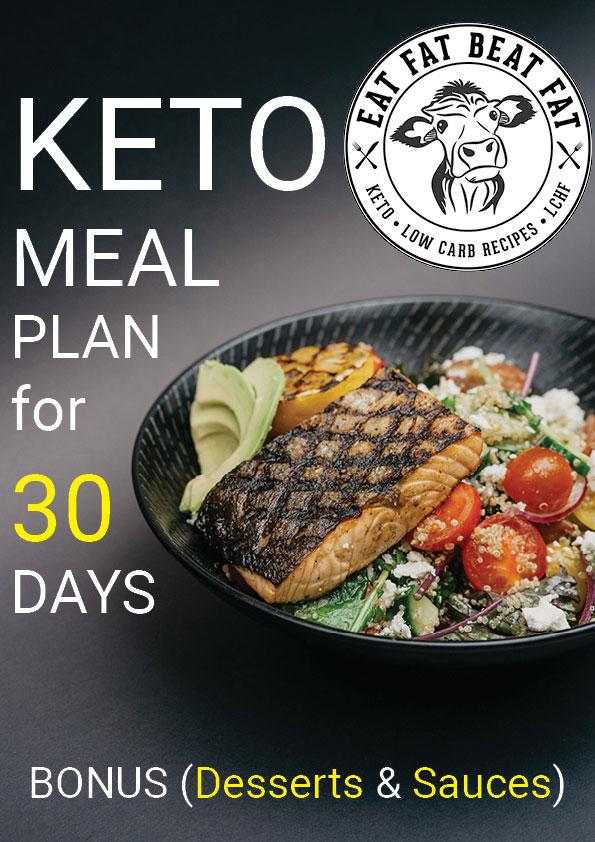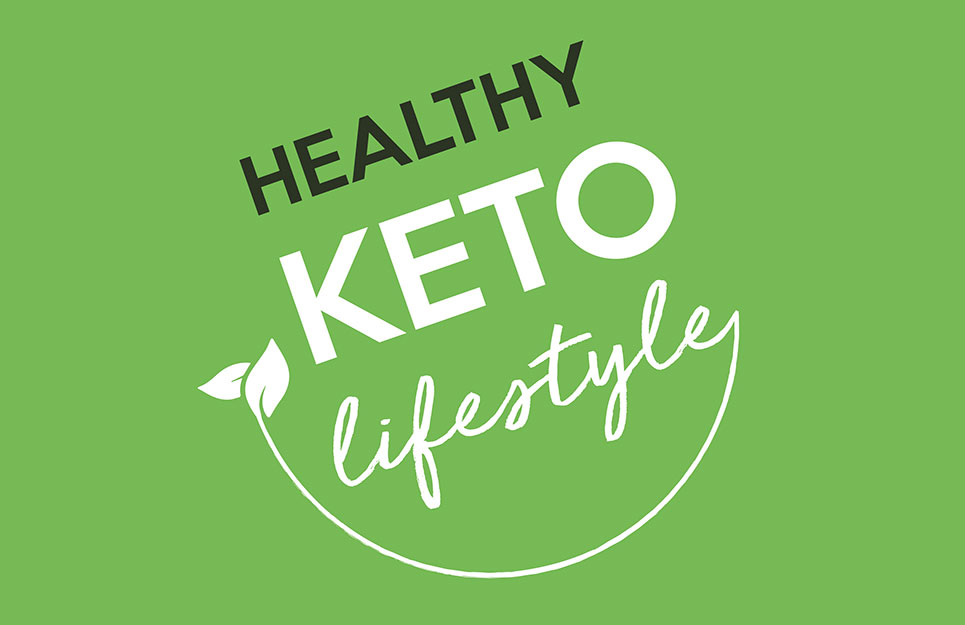Steve started working on himself unconventionally since he was willing to attempt just about anything. For more than a year, he cut back on calories, yet the weight did not disappear. He tried working out for more than an hour every day, six days a week, and while he got stronger, the fat didn’t go away.
Angry, he continued to dig. It turned out that his body was extremely carbohydrate sensitive, among other things. He started reducing his carb consumption after learning about the ketogenic diet, and eventually entered ketosis. The fat vanished for the first time in his life.
Steve has shed those tenacious one hundred pounds, and he now resembles a new man. He then initiated the Keto Lifestyle, a very effective tool for people following ketogenic diets. His “Bulletproof Coffee” is a particularly healthful way to start the day and is described in this article. I suggest it. His recipe for coffee includes:
- Single-source coffee, which is most likely free of mold toxins (coffee from a single location, not a blend of coffees from various areas).
- 1 Tbsp. grass-fed butter (or ghee), unsalted
- 1 Tbsp. CBD oil
- Optional cinnamon, stevia, vanilla extract, or cocoa powder
Combine these ingredients in a blender. The oil and butter stifle hunger, while the coffee gives your brain the jolt it requires (you can stir the ingredients together if you’re on the run, but blending is recommended). Your metabolism will continue to burn fat for hours with the help of this mixture, which turns into a rich, smooth beverage.
You start the day feeling energized and your nighttime ketone levels are carried over into the day.
THROUGH THE KETO LIFETYLE
When you are in the Keto Lifestyle, you typically don’t feel hungry or have desires for food. Your appetite hormones are often in balance, and you are reducing abdominal fat. You normally have a great amount of energy, as well as attention and mental clarity. You are on a cruise!
Some of my keto friends have said to me, “I feel like I’m eighteen years old again.” The Keto Lifestyle diet frequently takes on the qualities of both a feel-good diet and an antidepressant.
Results are usually quick as well. One to two pounds of fat are typically lost each week after losing four to five pounds of fluid in the first week. Many people can lose one pound of fat per day by adding exercise and drinking a Bulletproof Coffee or ketogenic coffee in place of breakfast. As opposed to Bulletproof Coffee, I personally like my ketogenic coffee made with avocado oil and MCT oil powder because it tends to increase HDL cholesterol while lowering LDL cholesterol. A quarter teaspoon of sugar-free dark chocolate powder is also added.
Without gaining weight, having an increased appetite, or having constant food desires!
When you consider what people often go through when they lose weight, that is truly amazing.
One individual I know had a KCL value that was close to 10 grams per day below average. That is a very low number. The point is that if he followed the Keto Lifestyle diet and consumed 20 grams a day, he would undoubtedly grumble that “it’s not working.”
IT IS TRUE.
Your body believes that storing fat is more significant than burning it. This changes while you’re in the Keto Lifestyle.
Questions do occasionally come up.
The fact that your body is changing from a sugar-burning engine to a fat-burning engine must be taken into consideration. The insulin rises and carb peaks have all stopped. Insulin, the primary hormone that instructs your body to accumulate fat, is currently all but nonexistent. The cycle of fat storage has been disrupted. That is a significant shift. Fortunately, your body is capable of handling it, but some hiccups are normal. Weight loss is quick and simple for the majority of my patients following the Keto Lifestyle diet when their fasting blood insulin level reaches 3.0 mcU/mL (microunits per milliliter) or preferably below. Yet few medical professionals measure serum insulin levels.
Withdrawals are another significant factor for many people. The norms and habits are changing, and sugars and carbohydrates are typically addictive!
Your body will most likely enter the Ketosis in one to five days. You’ll notice ketones on your pee test strips at that point and sense a change happening. It could take a week or more for some people to enter the Ketosis. It can take two to four weeks to enter the Ketosis if you have type 2 diabetes.
Keep in mind that even if your body seems to be revolting, you will succeed! If your body is resisting you, the practical advice listed below may help you enter the Ketosis and maintain there.
PERCEIVING BREACH
It’s incredibly difficult to predict how your body will respond to this general change from fat storage to fat burning. Although each part of your body is unique, including your KCL number (which you read in my previous article on this blog), the process is typically quick, similar to turning a switch.
The largest challenge, if it ever arises for you, is referred to by different people as the “gray zone,” “keto flu,” or “the week I locked my keys in the car.” Although annoying, it poses no hazard.
IT IS TRUE.
Your ketone levels should range from 0.5 to 5 millimolars. That is the Keto Lifestyle, which burns fat.
Have you ever attempted to sprint through knee-deep snow or water? It is slow going, but you can accomplish it. You will experience symptoms such as fatigue, bad breath, frequent urination, headaches, brain fog, strange symptoms (locking keys in car), constipation, gas, aching muscles, and even trouble sleeping if your body is not burning sugars and fats properly.
The solution is straightforward: leave as soon as you can!
Rest assured that neither the Keto Lifestyle nor the transition procedure involve anything like this. This is the situation of being trapped between burning sugar and burning fat for fuel. In order to take advantage of the Keto Lifestyle’s advantages, you must move through as quickly as you can.
If you’re having trouble, look at your diet. Are you consuming too many carbohydrates? Obtaining insufficient fats? Overdosing on keto protein? Make sure your daily carbohydrate limit of 20 grams is met. Some people with type 2 diabetes might need to reduce their daily carb intake to 10 grams.
Whenever you eat, add an extra 1 tablespoon of MCT oil powder or oil if you feel like you need or want a good push. You enter the Keto Lifestyle sooner if you consume MCT (medium-chain triglyceride) oil. MCT oil is available as a powder, pill, or liquid.
Usually, the body advances through the flu-like symptoms by increasing fats, especially MCT oil, and decreasing carbs and occasionally proteins. When that happens, you’ll be exactly where you want to be, taking advantage of all the Keto Lifestyle’s advantages.
As long as your protein intake is low to moderate, essential fat intake is high, and your carb intake is low enough for you, there is basically no way to prevent your body from entering the Keto Lifestyle. Even if you will eventually succeed, it is preferable to do it sooner.
IF NECESSARY, TROUBLESHOOTING
Everyone is unique, therefore as they enter the Keto Lifestyle, various people have different questions and worries. Here are a few of the most widespread:
What if I have dizziness, mental fog, or fatigue?
Almonds or other salted nuts, clear broth soup (like bouillon), or an electrolyte packet containing sodium, magnesium, and potassium are likely the best sources of sodium for you. Additionally, you might need to consume more sea salt or Himalayan salt.
Could I become constipated?
You require additional magnesium (200 mg twice daily is usual, double if constipated), fiber (from vegetables), and water (1 to 2 quarts per day as least). It will also be beneficial to consume more olive oil.
What if I experience gas, bloating, or diarrhea?
After a few days, when your body becomes used to the new high-fat diet, this will often end. Since magnesium may cause diarrhea in some people, you can reduce it a little. Additionally, taking too much MCT oil or olive oil can make you throw up. If you get diarrhea, reduce the amount of these oils you’re taking; once it stops, carefully and gradually increase the amount.
To improve their ability to digest fats and prevent diarrhea, people over the age of fifty-five may require a digestive enzyme with more lipase.
What if I get muscle pain, heart palpitations, or spasms in my eyes?
Most likely, you require additional potassium or magnesium. Magnesium levels in nuts are high. Alternately, you could consume 400 milligrams of chelated magnesium. Without the carbs, a half an avocado has twice as much potassium as a banana. Again, an electrolyte package will be helpful if it has magnesium, potassium, and sodium (a banana will knock you out of the Ketosis).
What if I start to feel hungry while dieting?
You are not eating enough fats (or too many carbohydrates or too much protein) if you feel hungry. You can eat a lettuce-wrapped burger without a bun with one to two pieces of cheese, one to two tablespoons of almond butter, a few slices of full-fat cheese, or even a chicken breast with one to two slices of cheese. That will quell your hunger and help you consume less carbs overall.
What happens if I consume something and then feel sleepy?
You may be experiencing inflammation as a result of that food or beverage (for instance, peanuts, coffee, cheese, whipping cream, etc.). You might be sensitive to it, it might include mold toxins or other toxins, or what you ate might simply have had too many carbohydrates. Maintain a daily carb consumption of no more than 20 grams by minimizing it whenever possible and avoiding it if necessary.
What if I urinate much more frequently than usual?
Your body lowers insulin levels as it enters a state of ketosis. You have retained water due to the elevated insulin levels, so you will lose four to five pounds of water weight during your first week in the Keto Lifestyle as your kidneys flush out the extra fluid. Drink enough water during this time (often 2 quarts per day for the first week, then 1 to 2 quarts), and take sodium, potassium, and magnesium supplements. After the first week, the frequent urine usually stops. You might also need to urinate one to two times during the night during the first week.
What happens if I don’t consume enough fiber?
Although fiber is crucial, the Keto Lifestyle diet typically provides sufficient of it in the form of vegetables. In a few weeks, you can add seeds (such chia or psyllium seeds, 1 tablespoon once to twice daily), however seeds also include carbohydrates. Green veggies’ fiber content will typically be enough for the time being.
What if I’m in pain?
Once again, it’s possible that your diet is contributing to inflammation. Common culprits include dairy, peanuts, and foods high in mold toxins (such moldy nuts and berries). every three to four days, switch up your dairy, or stay away entirely. There are various options for food and drink.
What if I accidentally consume too many carbohydrates?
Getting back on track usually just takes a day or twelve hours. Relax. The majority of the time, you may return to the Ketosis the next dayâ especially if you take MCT oil or powder, which immediately puts you into ketosis.
What if my gall bladder malfunctions?
Women who frequently follow low-fat diets and who are vegetarians may unknowingly suffer from gallbladder problems. Since fats typically aid the gallbladder in functioning better, their gallbladder may be full of sludge or may not be working effectively. The gallbladder will often be flushed out by consuming healthy fats like 1 to 2 tablespoons of olive oil two to three times a day.
For the first four to eight hours, you might need to take a teaspoon of olive oil every hour to gradually restore the gallbladder to normal function. If you need to, go slowly; if the pain doesn’t go away, see a doctor. You can have sludge in your gallbladder or undiscovered gallstones.
What if the four pounds I lost to water weight return?
Your body likely released four pounds of glycogen and water when you initially entered the Keto Lifestyle(ketosis). It is possible that you could unexpectedly gain that water back from a single meal if you accidentally push yourself out of the Ketosis (by eating pizza or a baked potato, for example). It could appear frightening, but you already know what happened. You will quickly drop those 4 pounds of water if you follow the Keto Lifestyle diet.
What if I experience depression?
Some people who follow a low-carb diet like the Keto Lifestyle experience low serotonin levels, which can lead to moderate sadness, low mood, or food cravings. Usually, women experience this more frequently than males do. A small amount of L-tryptophan (500â1000 milligrams) or the amino acid 5HTP (50â150 milligrams) before bedtime typically works wonderfully. Health food shops sell both of them.
IT IS TRUE.
Low serotonin levels are frequently accompanied by symptoms including anxiety, insomnia, cravings for sweets and carbohydrates, depression, and low self-esteem.
What if I take other meditative substances?
Your body will often start to mend in many ways after starting the Keto Lifestyle diet, which is one of its key advantages. You must follow up with your doctor frequently if you are taking medicine for hypertension, diabetes, arthritis, or high cholesterol to determine whether your dosage has to be reduced or even stopped.
Why can’t I fall asleep?
Make sure that you don’t drink your last cup of coffee or tea after 2:00 or 3:30 p.m. That can prevent you from sleeping. L-tryptophan or 5HTP can be beneficial at night. Increased energy and, for many people, a decreased need for sleep are two advantages of the Keto Lifestyle diet. The quality of your sleep should be good, but as time goes on, you might need less sleep. Additionally, as magnesium helps many people with insomnia, try taking your supplement around sleep.
What could possibly go wrong for me?
The Keto Lifestyle diet generally shouldn’t harm you, unless it helps you discover a medical condition (like gallstones) you currently have. Along with being the best way to lose weight, it is highly healthful. Expectant moms should avoid the Keto Lifestyle diet since it will impede necessary weight growth during pregnancy.
MAKE SURE YOU’RE IN THE KETO LIFESTYLE!
Naturally, the objective is to put you in the Ketosis as soon as possible so you can take advantage of and optimize the numerous advantages. Most likely, you will swiftly switch from burning sugar to burning fat. Make every effort to enter the Keto Lifestyle.
IT IS TRUE.
Is corn oil wholesome? Although it does lower cholesterol, it also causes cholesterol to oxidize, which increases the risk of artery plaque.
If any of these symptoms appear, consider returning to the most likely culprit: dietary consumption. Then, eat more fats while eating less protein and carbs.
Additionally, start yourself off strong with MCT oil or powder. It will often assist you enter the Ketosis more quickly and avoid any potential “keto flu” symptoms caused by being caught between the processes of burning fat and sugar.
Start on a Friday afternoon if you are concerned that the transfer procedure will negatively impact your ability to function at work. Come Monday morning, you’ll probably be deep in the Ketosis.
The Keto Lifestyle diet’s proportions of 70% fats, 15% protein, and 15% carbs from green vegetables are crucial. You can burn fat by using this as your main fuel source without experiencing hunger, cravings, or excessive appetite hormones.
What more could you want than to burn fat all day and all night, feel wonderful, sleep well, reverse various diseases, and stop oxidation and inflammation?
An extensive list of foods, menu options, and recipes on this blog would help to make this process more simpler.








